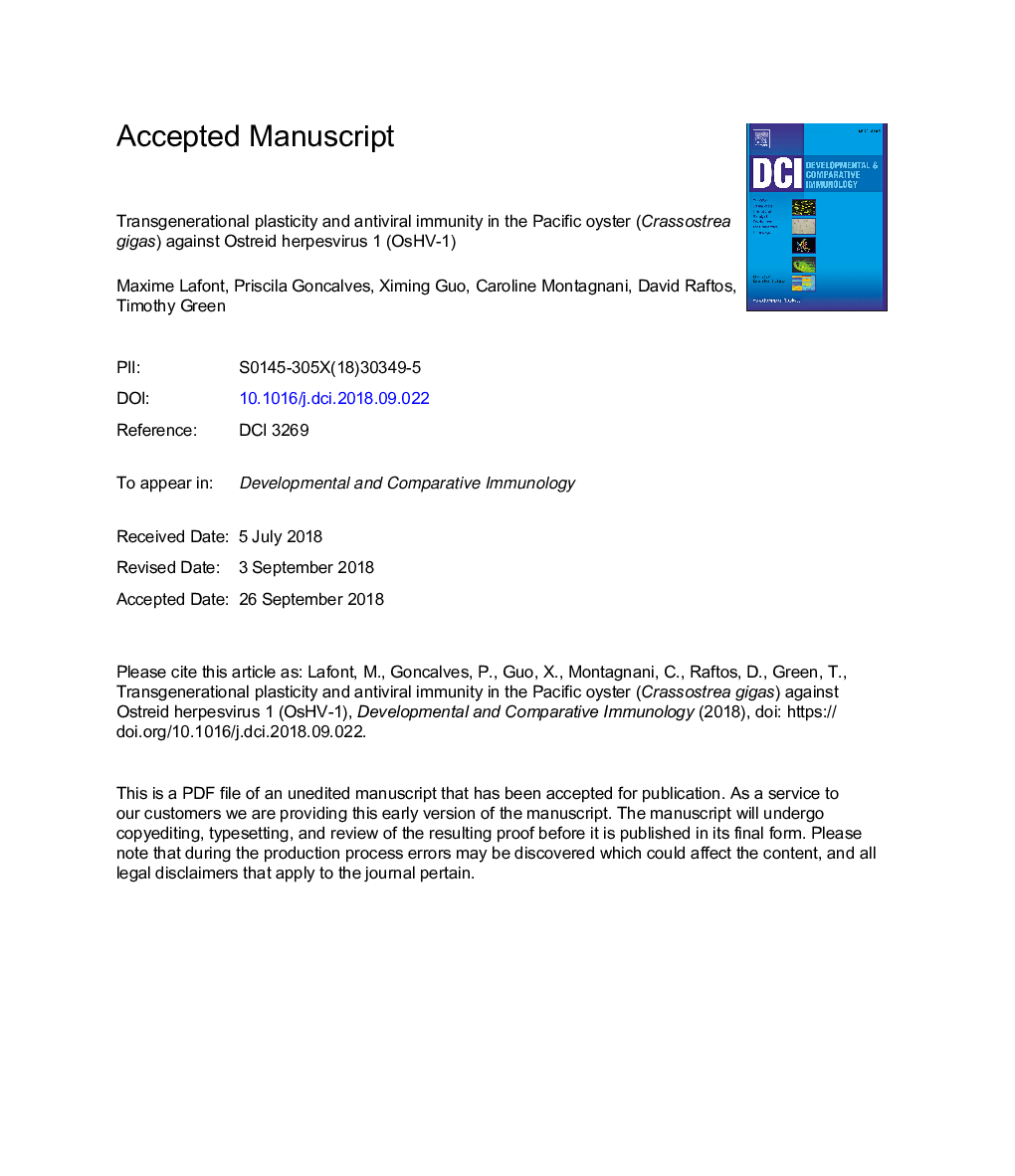| Article ID | Journal | Published Year | Pages | File Type |
|---|---|---|---|---|
| 11010712 | Developmental & Comparative Immunology | 2019 | 26 Pages |
Abstract
The oyster's immune system is capable of adapting upon exposure to a pathogen-associated molecular pattern (PAMP) to have an enhanced secondary response against the same type of pathogen. This has been demonstrated using poly(I:C) to elicit an antiviral response in the Pacific oyster (Crassostrea gigas) against Ostreid herpesvirus (OsHV-1). Improved survival following exposure to poly(I:C) has been found in later life stages (within-generational immune priming) and in the next generation (transgenerational immune priming). The mechanism that the oyster uses to transfer immunity to the next generation is unknown. Here we show that oyster larvae have higher survival to OsHV-1 when their mothers, but not their fathers, are exposed to poly(I:C) prior to spawning. RNA-seq provided no evidence to suggest that parental exposure to poly(I:C) reconfigures antiviral gene expression in unchallenged larvae. We conclude that the improved survival of larvae might occur via maternal provisioning of antiviral compounds in the eggs.
Related Topics
Life Sciences
Biochemistry, Genetics and Molecular Biology
Developmental Biology
Authors
Maxime Lafont, Priscila Goncalves, Ximing Guo, Caroline Montagnani, David Raftos, Timothy Green,
